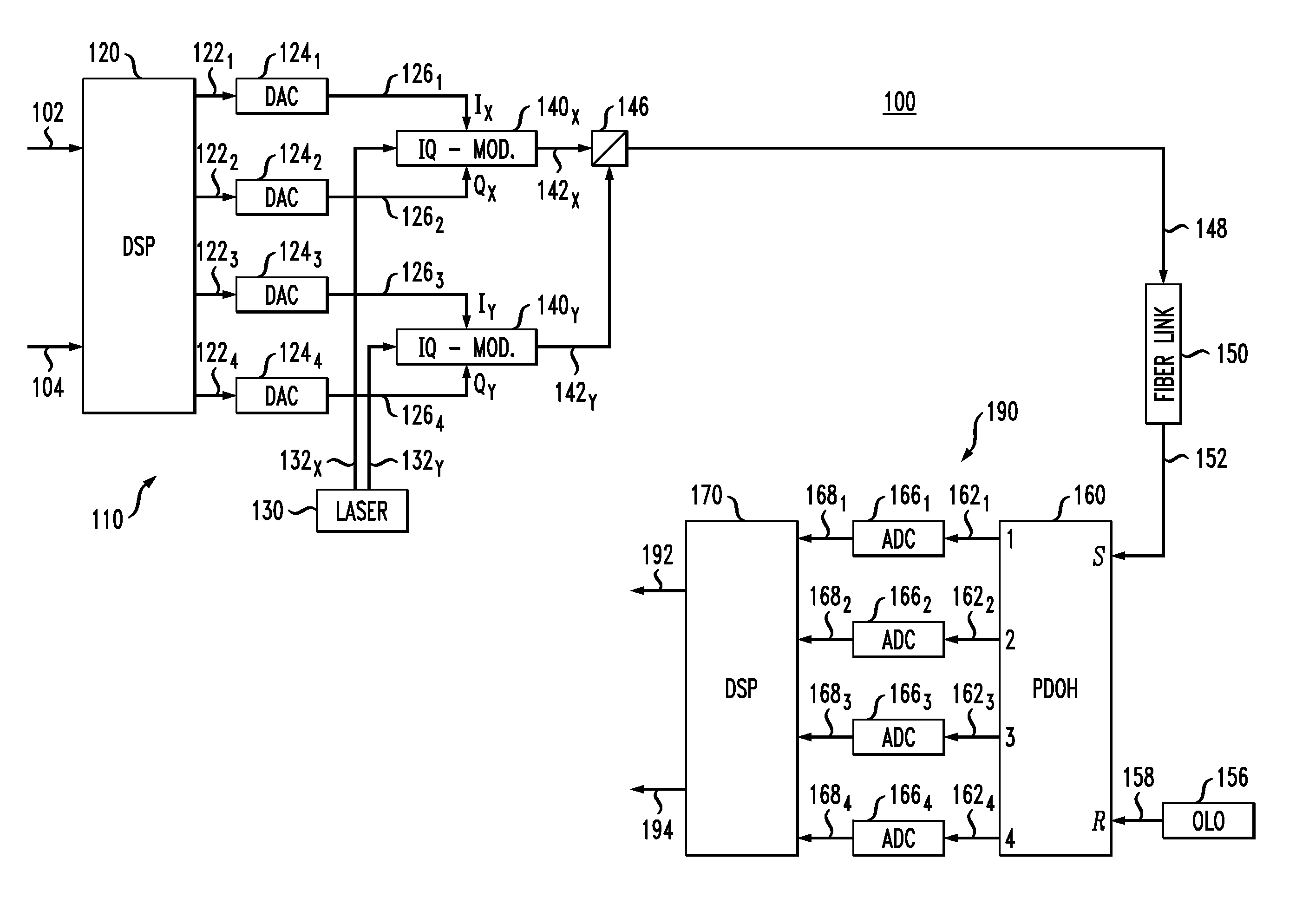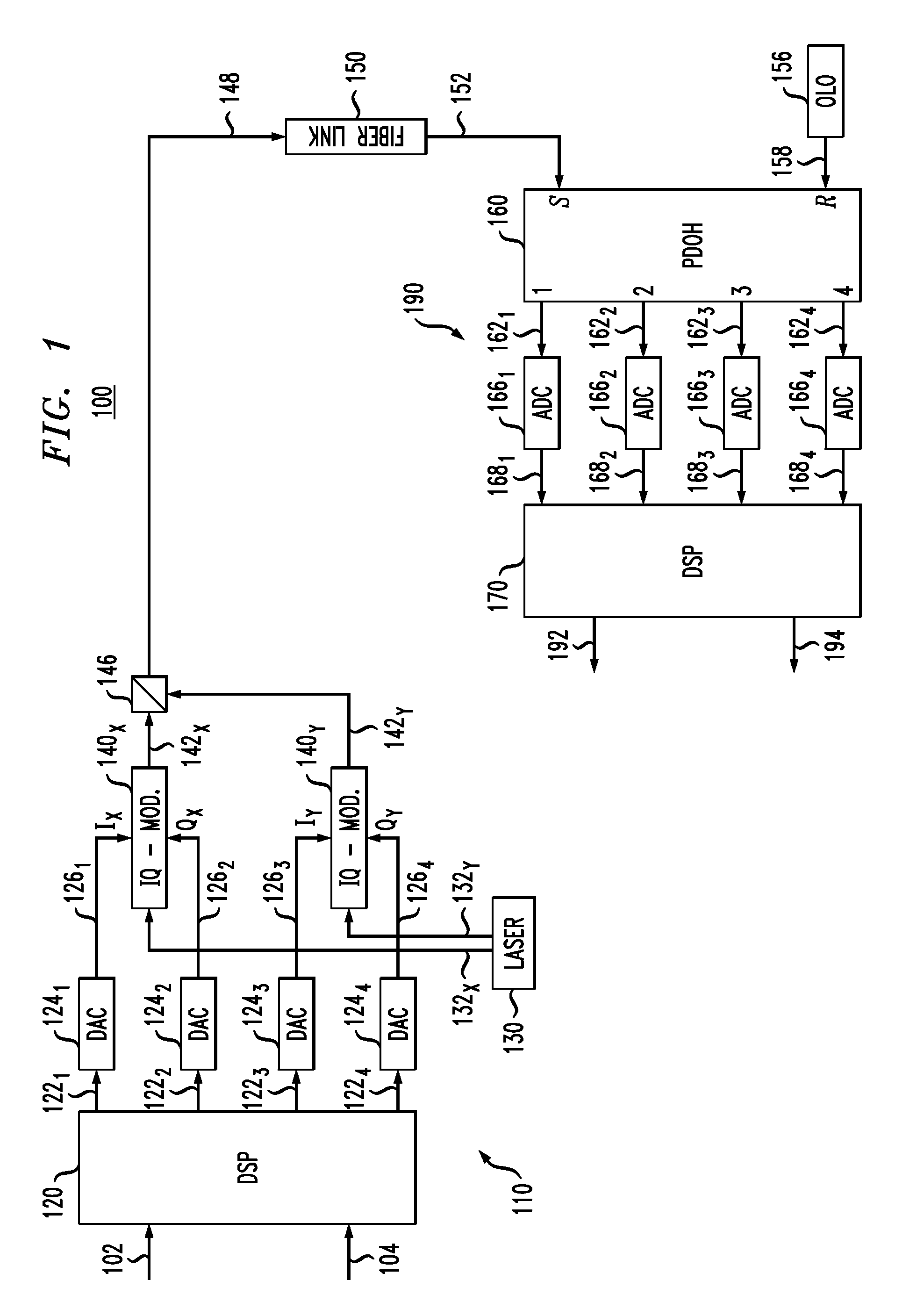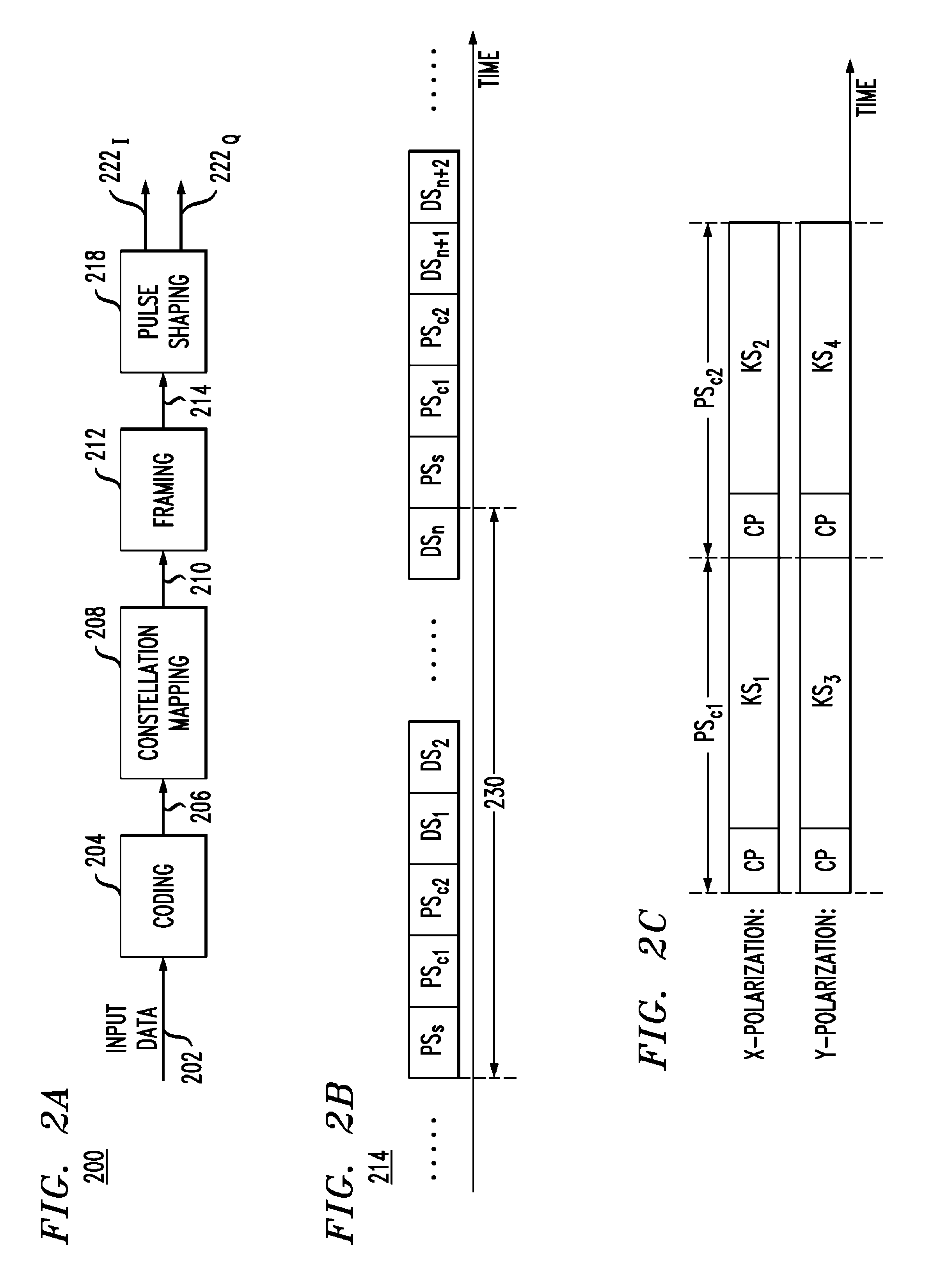Coherent optical receiver for pilot-assisted data transmission
a pilot-assisted data and optical receiver technology, applied in the field of optical communication equipment, can solve the problems of affecting the transmission performance of optical fiber links, requiring relatively sophisticated digital signal processing not only at the receiver, but also at the transmitter, and reducing the practical implementation of dispersion compensation in the optical domain. , to achieve the effect of saving processing time and/or power, and canceling the adverse effects of inter-block interferen
- Summary
- Abstract
- Description
- Claims
- Application Information
AI Technical Summary
Benefits of technology
Problems solved by technology
Method used
Image
Examples
Embodiment Construction
[0014]OFDM transmission and single-carrier (SC) transmission with frequency-domain equalization (FDE) have similar digital-signal-processing (DSP) complexities. The main DSP difference between these two signal transmission techniques is that, in OFDM transmission, the inverse fast-Fourier-transform (IFFT) operation is performed at the transmitter side while, in SC-FDE transmission, it is performed at the receiver side. As a result, a transmitter in an SC-FDE transmission system may use a digital-signal processor of lesser processing power than that of a digital-signal processor used in an OFDM transmitter. In addition, an SC-FDE transmission system can advantageously be configured to have a smaller peak-to-average power ratio (PAPR) value than a comparably performing OFDM system, thereby relaxing the constraints on modulation and power-amplifier nonlinearities.
[0015]FIG. 1 shows a block diagram of a single-carrier optical transmission system 100 according to one embodiment of the in...
PUM
 Login to View More
Login to View More Abstract
Description
Claims
Application Information
 Login to View More
Login to View More - R&D
- Intellectual Property
- Life Sciences
- Materials
- Tech Scout
- Unparalleled Data Quality
- Higher Quality Content
- 60% Fewer Hallucinations
Browse by: Latest US Patents, China's latest patents, Technical Efficacy Thesaurus, Application Domain, Technology Topic, Popular Technical Reports.
© 2025 PatSnap. All rights reserved.Legal|Privacy policy|Modern Slavery Act Transparency Statement|Sitemap|About US| Contact US: help@patsnap.com



